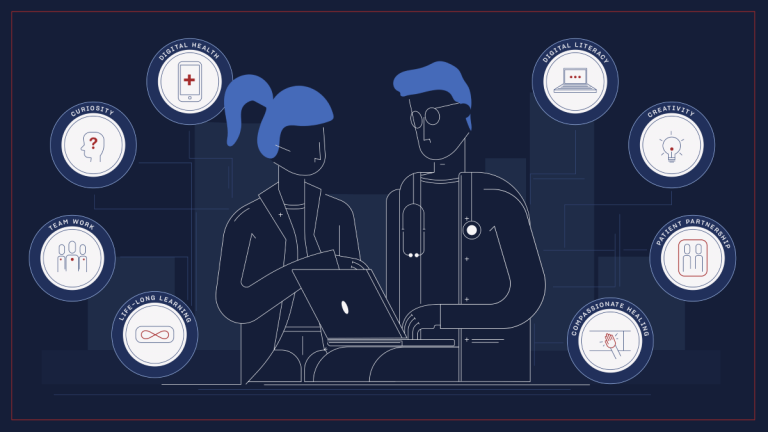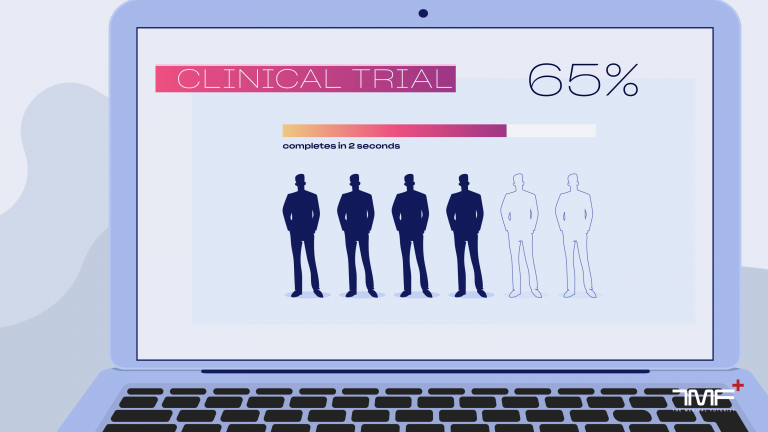The Medical Futurist – Read More
From in-silico trials to 3D printed drugs, the future of the pharmaceutical landscape is set to look wildly different from just a few decades ago. However, this presumed evolution is based on what is publicly known so far. Executives from the pharma industry have their own vision for the future, which they rarely voice publicly.
After giving hundreds of keynote speeches to pharma companies, I’ve had numerous candid conversations with pharma leaders. These have provided insights into what the executives think about the future, but might not be known publicly. Sometimes, their private visions diverge from their public ones, and this article shares what they won’t admit publicly through four lenses.
1. Promising trends vs reality check: trends with lagging adoption
Digital health developments have led to a radical change in care delivery and the very role of patients themselves. Progress in this field promises to reorient care around individual patients’ needs by treating patients as equal-level partners. We’ve even collected the 10 most promising trends changing the future of the pharma industry. However, several of those trends, despite being significant, have been lagging behind in adoption.
One of the major trends, patient-centricity, aims to prioritise the needs and perspectives of patients from the drug development to the commercialisation process. This focus could, in theory, boost pharma companies’ marketing positioning, improve customer trust and enhance health outcomes. But in reality, companies are facing challenges in implementing such an approach due to limited patient engagement, ethical considerations and resistance to change in traditional drug development processes.

A technology that could help patients better understand the functioning of drugs is augmented reality (AR). For example, by scanning a QR code on a drug label, they could see how that particular medicine works interactively in 3D, with details of its intended users and potential side effects. This would save them from reading long text descriptions and really make the experience more fun. However, AR has not been adopted at scale for such purposes in the pharma industry and has mostly remained contained in pilot projects.
Some 3D printed drugs made strides some years ago by getting FDA approvals and undergoing clinical trials. The technology could even tailer medication doses to individual patients; but only one company, FabRx, has been spearheading this field.
Due to the challenges in adopting these trends and technologies, pharma leaders will likely shift their focus away from them, despite their promise, and lean towards more feasible options.
2. Fears and excitements: trends pharma execs are really excited about
There is palpable enthusiasm around artificial intelligence (AI) globally, and pharma leaders do not want to miss out on the potentials of the technology. This is one trend that they can get behind and have been doing so to assist in numerous tasks within their businesses.
With the technology, the traditionally time-consuming and labour-intensive drug design process can be made more efficient. For example, the generative AI model developed in collaboration between NVIDIA and Recursion Pharmaceuticals demonstrated its unique screening prowess. It can screen more than 2.8 quadrillion small molecule-target pairs in a week; a significant time-saver compared to the 100,000 years it would take for this process with traditional methods.
AI models, such as those developed by Benevolent AI, can analyse significant amounts of datasets from scientific literature, clinical records and chemical databases in a more time efficient manner than humans can. From this information, they can precisely identify targets and how potential drugs will interact with them.
Companies like Schrödinger and Google DeepMind have used AI for drug formulation. Their software predicts the behaviour of drug candidates and assess their safety and effectiveness.

AI technology, in particular large language models (LLMs), has also had practical uses within the pharma industry. Roche’s internal LLM tool, Roche GPT, assists the company’s team in optimising repetitive tasks and sharing knowledge. It also supports their business by automating structured data extraction about therapies and patients from scientific articles and clinical test results. A similar tool has also been deployed by Pfizer to help with its marketing efforts.
Such AI tools can significantly improve a company’s efficiency by optimising internal operations and customer service; and is thus attracting pharma leaders who do not want to be left out from this new technological wave.
3. Blind spots and missed opportunities: trends that don’t get enough attention
Pharma executives are aware that the real competitive edge may lie not in flashy one-time pilots, but in quietly perfecting new business models and organisational structures. This is why many consider some seemingly-niche trends as blind spots and missed opportunities that deserve much more attention.
To better meet the needs of patients in the digital health era, executives are eyeing new reimbursement models. Recognising the potential of digital health tools such as remote monitoring and mobile health apps, pharma companies are shifting away from simply medication prescription and towards a more holistic, more attractive healthcare experience for patients.
One early example is Roche’s acquisition of diabetes management app MySugr. It can pair with the pharma company’s Accu-Chek blood glucose meters to automatically log blood sugar readings and augment diabetics’ management of their condition. GSK also made a similar move by partnering with Propeller Health on smart inhalers; while Partners Healthcare Center and Japanese drug maker Daichii-Sankyo teamed up to bring a connected wearable for patients with atrial fibrillation.
Digital tools have been shown to improve health outcomes while minimising financial costs. By combining medication and technology packages, pharma companies can make their products stand out while being beneficial for both patients and insurance providers.

As pharma companies look into the future, there is the clear need to focus on digital health trends and technologies. Major players in the pharma industry have established in dedicated digital health units to help shape the future of their company. Bayer launched a unit focused on developing precision health consumer products. Similarly, AstraZeneca formed a health tech unit to integrate AI into its pharmaceutical offerings.
However, such bids to stay relevant in the digital health era do not always pan out positively. This was the case with Biogen, which closed down its digital health unit and ended its collaboration with Apple on a digital health app for Parkinson’s disease. Pharma leaders consider such reversals as a missed opportunity to build a lasting digital presence.
4. The Big Debate: high-risk, high-reward trends
What keeps pharma executives up at night is what we can call “The Big Debate”. This relates to trends that could deliver the biggest results, but they come with high risks in case they don’t pan out due to the high investments involved.
One such trend is that of in silico clinical trials. Such trials are undertaken via computer simulations, circumventing animal or human testing while being both time- and cost-effective. Significant progress has been made in this space such as the organs-on-a-chip developed by the Wyss Institute to emulate the complex structures and functions of living human organs. Their technology has been leveraged by Emulate Inc for efficient drug development. The mathematical model of human physiology created by HumMod has been used in several research projects.
The vast potential of in silico clinical trials has put the technology on the radar of pharma executives. However, they are more cautious about its impact in the near future as the field is still evolving, but they acknowledge its importance in the long run.

Digital therapeutics (DTx) refer to evidence-based software applications designed to prevent, manage, or treat medical conditions. As they can generally be accessed through a smartphone or web browser, they offer new levels of accessibility and privacy while also presenting minimal side effects. As such, pharma leaders see a future where DTx are a central part of their business.
There is a growing number of DTx solutions for a range of conditions. For example, Pfizer has teamed with Sidekick Health to launch a DTx solution for atopic dermatitis. Eli Lilly also partnered with Sidekick Health to develop apps to support breast cancer treatment. However, a future with DTx hinges on evidence from randomized trials to convince broader adoption.
Another high-risk/high-reward trend is that of collaborations with tech giants. With the latter increasingly flirting with the health and wellness, they have partnered with pharma companies on several projects. One example is the partnership between Boehringer Ingelheim and Google to apply quantum computing in pharmaceutical research and development. This can give pharma companies a significant boost, even leading to mergers. However, there is the risk of such partnerships falling apart, such as the downfall of 23andMe, which collaborated with GlaxoSmithKline, but the company has recently filed for bankruptcy. On the other hand, executives are worried that they are helping future competitors learn the ropes of their own market and slowly making themselves obsolete.
What will be the next big pharma trend?
While these insights reflect what pharma executives aren’t voicing out loud, there are several trends that will shape the future of pharma. They must balance headline-grabbing innovation with meaningful change, some of which might be beyond their control, and they will have to contemplate their integration within their business models. We will be regularly reporting on such trends, so be sure to keep an eye out for future articles.
Written by Dr. Bertalan Meskó & Dr. Pranavsingh Dhunnoo
The post What Pharma Executives Secretly Think About the Future (But Won’t Admit Publicly) appeared first on The Medical Futurist.





